
Heart: How to Prevent and Manage Cardiovascular Diseases
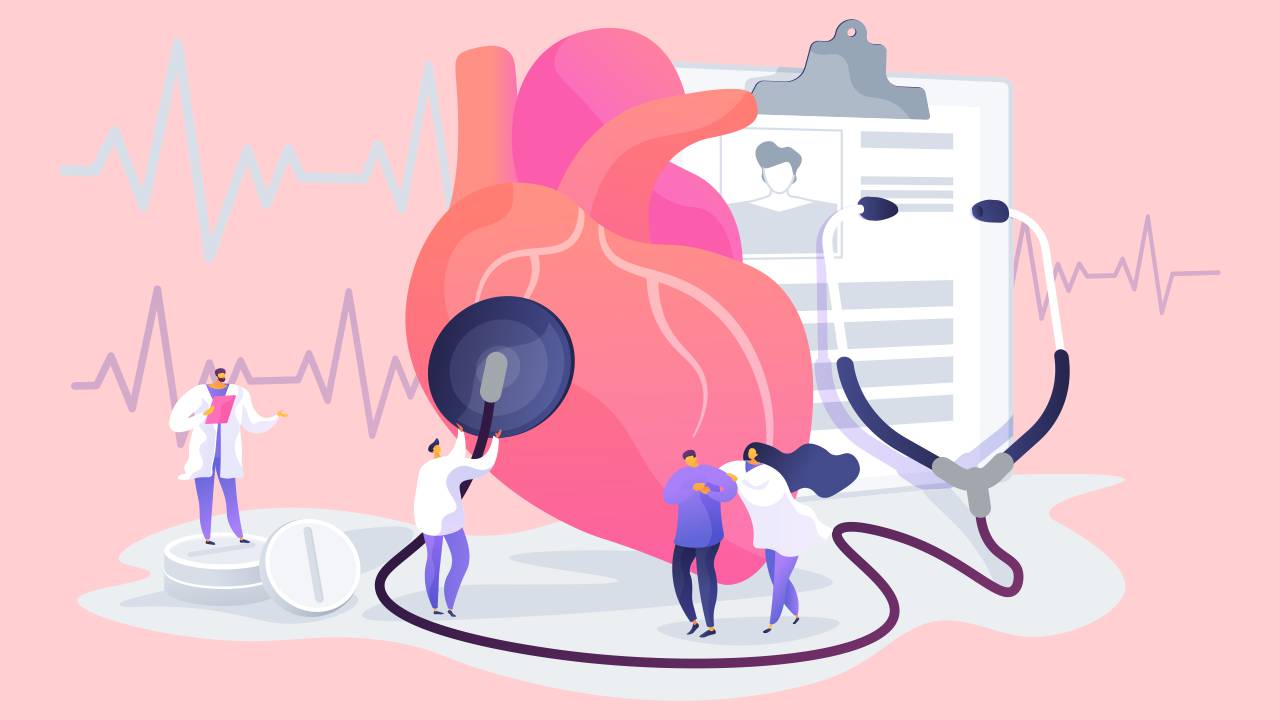
Cardiovascular diseases (CVDs) are disorders of the heart and the blood vessels. While the exact cause of CVDs is not known, an unhealthy lifestyle can increase the risks. Smoking cigarettes, drinking too much alcohol, leading a sedentary lifestyle, being overweight or obese, and having a poor diet can make you more susceptible to CVDs. Health conditions like diabetes, hypertension and high cholesterol, and hereditary factors can also put you at risk.
Statistically, CVDs are the leading cause of deaths globally. According to the World Health Organization (WHO), 17.3 million deaths in 2008 (30% of the total deaths worldwide) were caused by CVDs. Of the 17.3 million CVD deaths, 7.3 million were caused by coronary heart disease and 6.2 million due to stroke.
Common types of CVDs
Hypertensive heart disease

Blood pressure is the force exerted by blood against the walls of the blood vessels as the heart pumps blood to the rest of the body. Blood pressure is determined by:
- The ability of blood vessels to hold the blood under pressure
- The resistance by the blood vessels
- The force with which the heart pumps the blood
A blood pressure reading of 140/90mm of Hg or more is classified as hypertension or high blood pressure. High blood pressure is when the blood flows through the blood vessels with greater force. The arteries may also have an increased resistance against this force causing the heart to pump harder to circulate the blood.
Hypertension can be a major risk factor for stroke, coronary heart disease, and aneurysm.
Arteriosclerosis and atherosclerosis
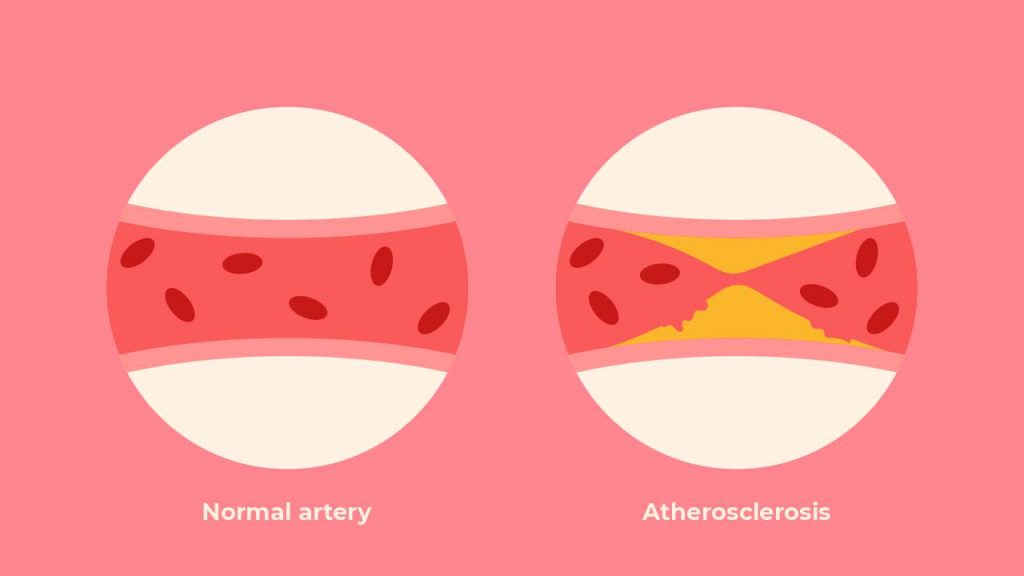
1. The terms arteriosclerosis and atherosclerosis are often used interchangeably. However, there is a difference.
2. Arteriosclerosis is a broader term, wherein the arteries become thick and hard restricting blood flow from the heart to the rest of the organs and tissues.
3. Atherosclerosis is a type of arteriosclerosis, when plaque is formed due to the deposition of fats and cholesterol in the walls of the arteries. Plaque can cause your arteries to become narrow and reduce the blood flow. Reduced blood flow to the vital organs can cause heart attack and stroke as well as other health conditions.
Coronary heart diseases (CHD) or ischemic heart disease (IHD)
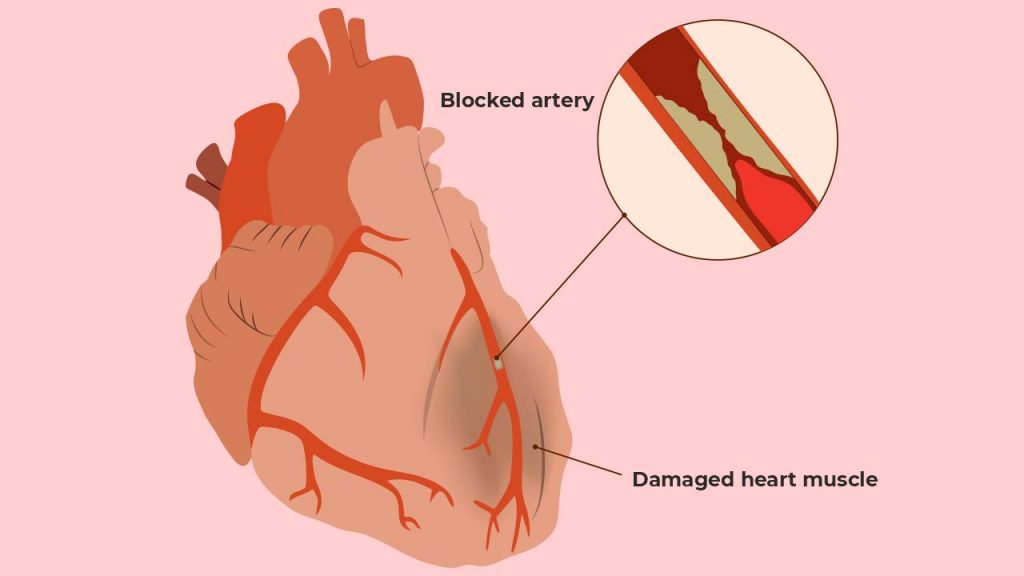
1. Coronary arteries are blood vessels which supply oxygen to the heart. When these arteries become narrow due to the deposition of cholesterol on the artery walls, the flow of oxygen-rich blood to the heart muscles gets affected. Inadequate supply of oxygen and nutrients damages the heart muscles.
2. The symptoms of CHD can vary from person to person. Most of the time, people do not know they have CHD until they experience symptoms like angina (pain in the chest), breathlessness, dizziness, panic, and sweating. CHD may lead to heart attack (myocardial infarction).
Myocardial infarction (heart attack)
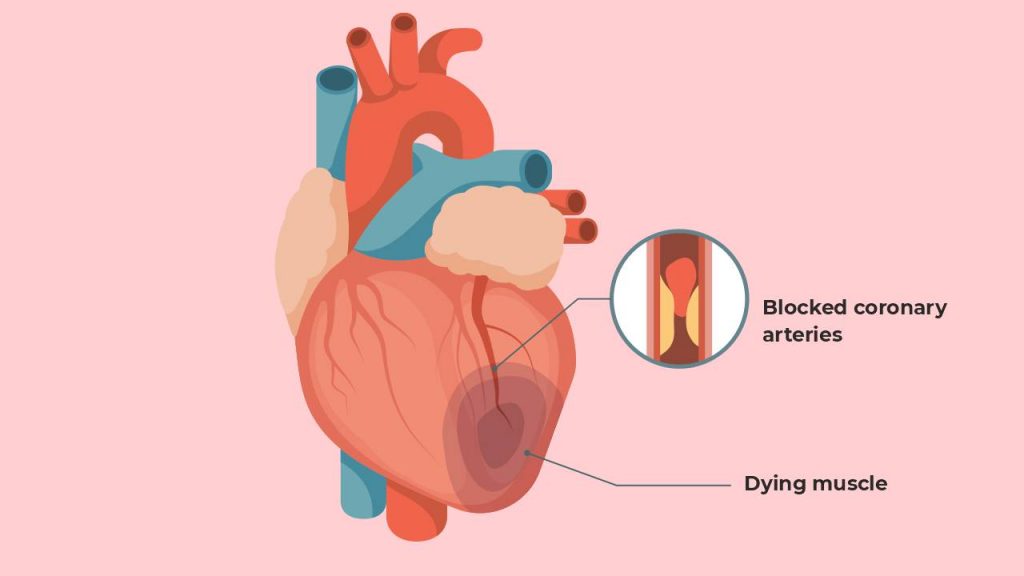
1. Myocardial infarction is a life-threatening condition that occurs because of an abrupt stop in supply of oxygen to the heart muscles.
2. This is a result of thrombus (blood clot) formation in the coronary artery. People with atherosclerosis are also susceptible to myocardial infarction.
3. The symptoms of myocardial infarction include tightness and a burning sensation in the chest, excruciating chest pain, shortness of breath, sweating, anxiety, and dizziness.
Stroke
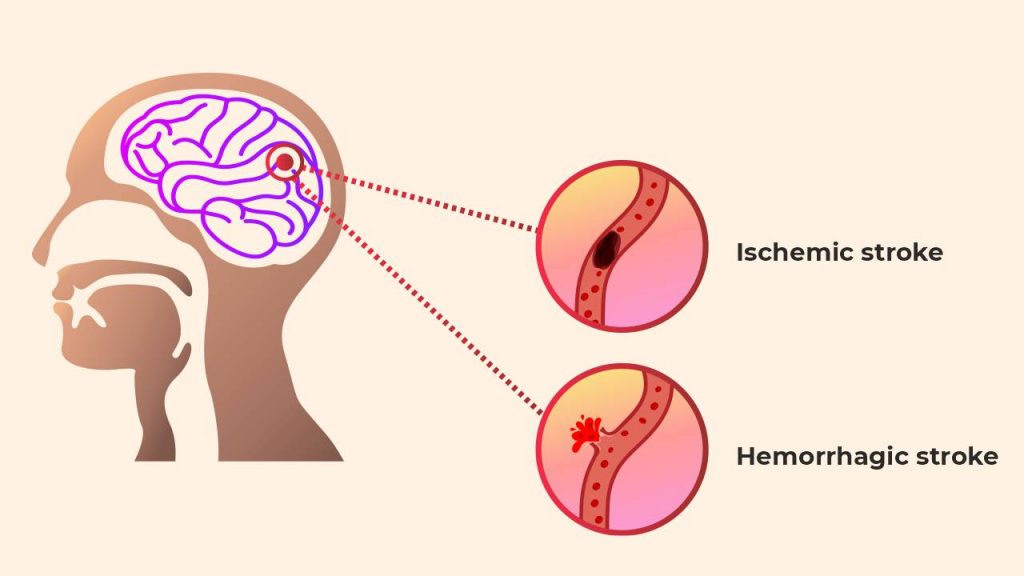
Stroke is a life-threatening condition, where there is reduced or no blood supply to the brain, causing the brain cells to die due to compromised supply of oxygen and other nutrients. Strokes can be of three types:
1. Ischemic stroke: This is the most common type of stroke, where a blood clot prevents blood and oxygen from reaching the brain.
2. Hemorrhagic stroke: It occurs when the blood vessel in the brain ruptures, thus reducing the supply of blood to certain parts of the brain.
3. Transient ischemic attack (TIA): This is a temporary stroke, also referred to as mini stroke. It occurs when the blood supply of the brain gets cut off for a short period of time. The symptoms resolve quickly in a few minutes, when normal blood supply is established on its own.
The acronym FAST best describes stroke symptoms:
- F: Facial drooping due to paralysis
- A: Arm weakness
- S: Speech difficulty
- T: Time for medical help
Other symptoms:
- Trouble seeing with one or both eyes
- Trouble walking
- Headache
Also read: Stroke: When You Need to Act F.A.S.T
Aneurysm

1. Aneurysm is the ballooning of a part of an artery. A weakened muscle in the artery wall can lead to the bulge. Generally, aneurysms do not show any symptoms and are not life threatening. But in some cases, aneurysms may burst and lead to severe internal bleeding and can cause death.
2. Aneurysms can occur in any artery, but the most common ones are in the arteries of the brain and aorta (the main blood vessel that carries blood from the heart to the rest of the body).
Congestive heart failure (CHF)
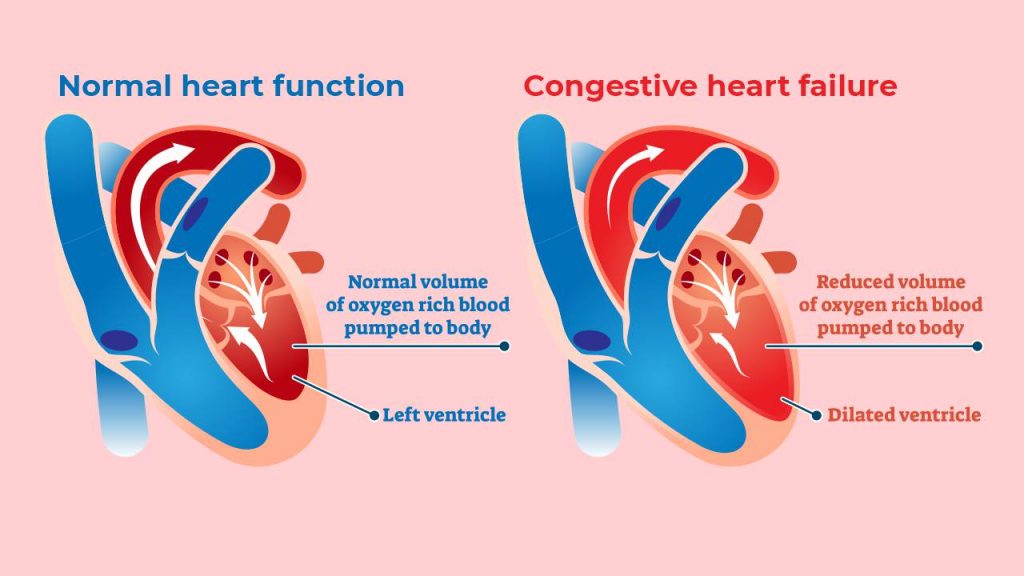
Congestive heart failure or heart failure occurs when the heart muscles do not pump adequate blood to the body leading to lack of oxygen supply. This occurs because of high blood pressure or coronary artery disease, rendering the heart weak and stiff, and hindering its ability to pump blood effectively.
Symptoms of heart failure:
- Shortness of breath
- Swelling of legs, ankles, feet, and abdomen
- Fatigue and weakness
- Increased urination at night
- Coughing and wheezing with blood-tinged phlegm
- Reduced ability to exercise
- Chest pain
- Lack of appetite and nausea
- Reduced alertness
Can we prevent CVDs?
Most of the heart conditions are caused by an unhealthy lifestyle. To keep your heart healthy, you need to bring about lifestyle changes. Here’s what you should do:
Move
Bid adieu to a sedentary lifestyle. Exercise daily for 30 to 60 minutes. Physical exercise helps you control weight, cholesterol and diabetes, which are major risk factors for CVDs.
You must perform 150 minutes of moderate exercise such as walking or 75 minutes of vigorous exercises every week to keep your heart healthy.
Eat healthy
Eat healthy to reduce your hypertension, cholesterol, and diabetes. You can include the following in your diet:
- Vegetables and fruits
- Beans and legumes
- Whole grains
- Healthy fats
- Avoid salt, sugar, alcohol, and saturated and trans fats
Do not smoke
Tobacco has chemicals, which can damage the heart and blood vessels. Smoking also reduces the oxygen-carrying capacity of the blood and increases your blood pressure and heart rate. Smokers are at higher risk of suffering from all types of CVDs.
Quality sleep
Poor sleep can lead to obesity, high blood pressure, diabetes, and heart attack. Sleep soundly for seven to eight hours every night.
Get regular screening done
Check for diabetes, cholesterol, and blood pressure on a regular basis or as advised by your doctor.
References
1. What is Cardiovascular Disease? Heart. https://www.heart.org/en/health-topics/consumer-healthcare/what-is-cardiovascular-disease (accessed Apr 22, 2021).
2. Cardiovascular disease. NHS. https://www.nhs.uk/conditions/cardiovascular-disease/#:~:text=gender – men are more likely, and contribute to weight gain (accessed Apr 22, 2021).
3. Heart disease. MayoClinic. https://www.mayoclinic.org/diseases-conditions/heart-disease/symptoms-causes/syc-20353118 (accessed Apr 22, 2021).
4. Felman A. Everything you need to know about hypertension. Medical News Today. https://www.medicalnewstoday.com/articles/150109#_noHeaderPrefixedContent (accessed Apr 22, 2021).
5. What is blood pressure? Centers for Disease Control and Prevention. https://www.cdc.gov/bloodpressure/about.htm (accessed Apr 22, 2021).
6. Arteriosclerosis / atherosclerosis. MayoClinic. https://www.mayoclinic.org/diseases-conditions/arteriosclerosis-atherosclerosis/symptoms-causes/syc-20350569#:~:text=Arteriosclerosis occurs when the blood to your organs and tissues (accessed Apr 22, 2021).
7. Coronary Heart Disease. NIH. https://www.nhlbi.nih.gov/health-topics/coronary-heart-disease#:~:text=Coronary heart disease is a death in the United States (accessed Apr 22, 2021).
8. Heart Attack (Myocardial Infarction). Harvard Health Publishing. https://www.health.harvard.edu/a_to_z/heart-attack-myocardial-infarction-a-to-z (accessed Apr 22, 2021).
9. McIntosh J. Everything you need to know about stroke. Medical News Today. https://www.medicalnewstoday.com/articles/7624 (accessed Apr 22, 2021).
10. F.A.S.T. Materials. American Stroke Association. https://www.stroke.org/en/help-and-support/resource-library/fast-materials (accessed Apr 22, 2021).
11. Heart failure. MayoClinic. https://www.mayoclinic.org/diseases-conditions/heart-failure/symptoms-causes/syc-20373142#:~:text=Heart failure%2C sometimes known as,to fill and pump efficiently (accessed Apr 22, 2021).
12. Strategies to prevent heart disease. MayoClinic. https://www.mayoclinic.org/diseases-conditions/heart-disease/in-depth/heart-disease-prevention/art-20046502 (accessed Apr 22, 2021).














